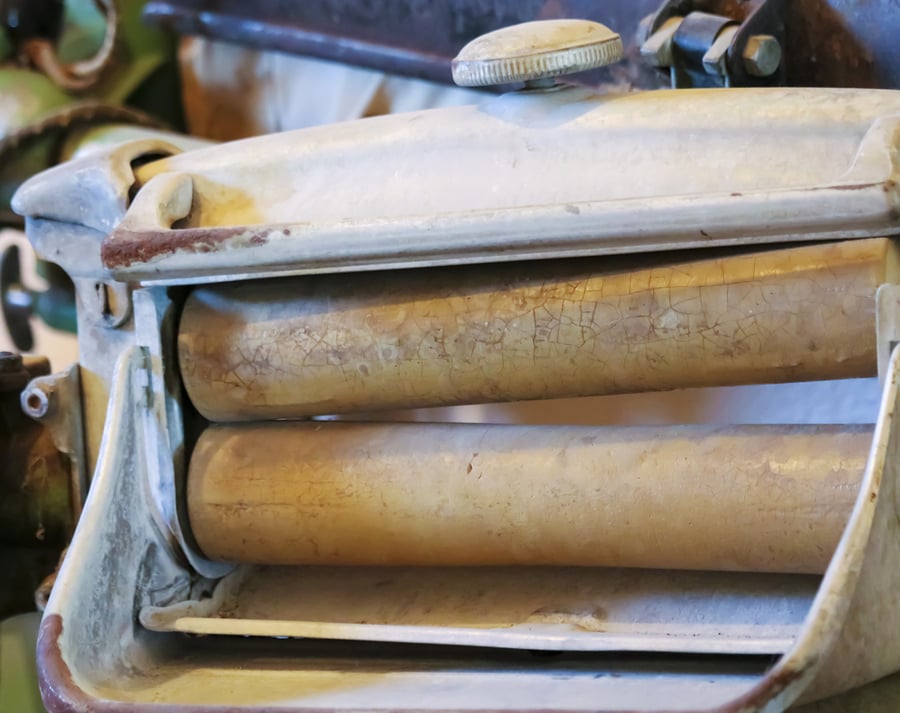Washing machines: a brief history
Before running water and electricity washing the household clothes would take a staggering amount of time and effort.
To wash, boil and rinse a single load of clothes could take up to 50 gallons of water which had to be hand carried from a pump or well. To wash the laundry could take an entire day or more of back breaking labour using a glass wash board and wooden posser or washing dolly. Luckily, things are a little easier for us today.
Let’s take a look at how the washing machine has evolved:
1930’s
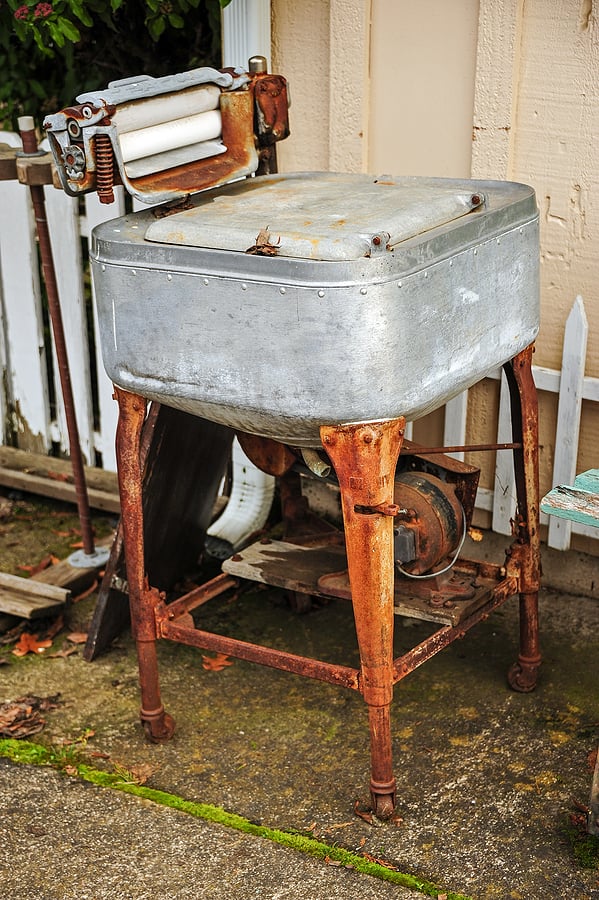
One of the first washing machines to use electricity was simply a tub on legs with a motor attached underneath. There was no heater or switch, it was just attached to the mains supply. The housewife or maid would have added soda crystals with a combination of grated soap or fairy soap to help wash the clothes.
1940’s
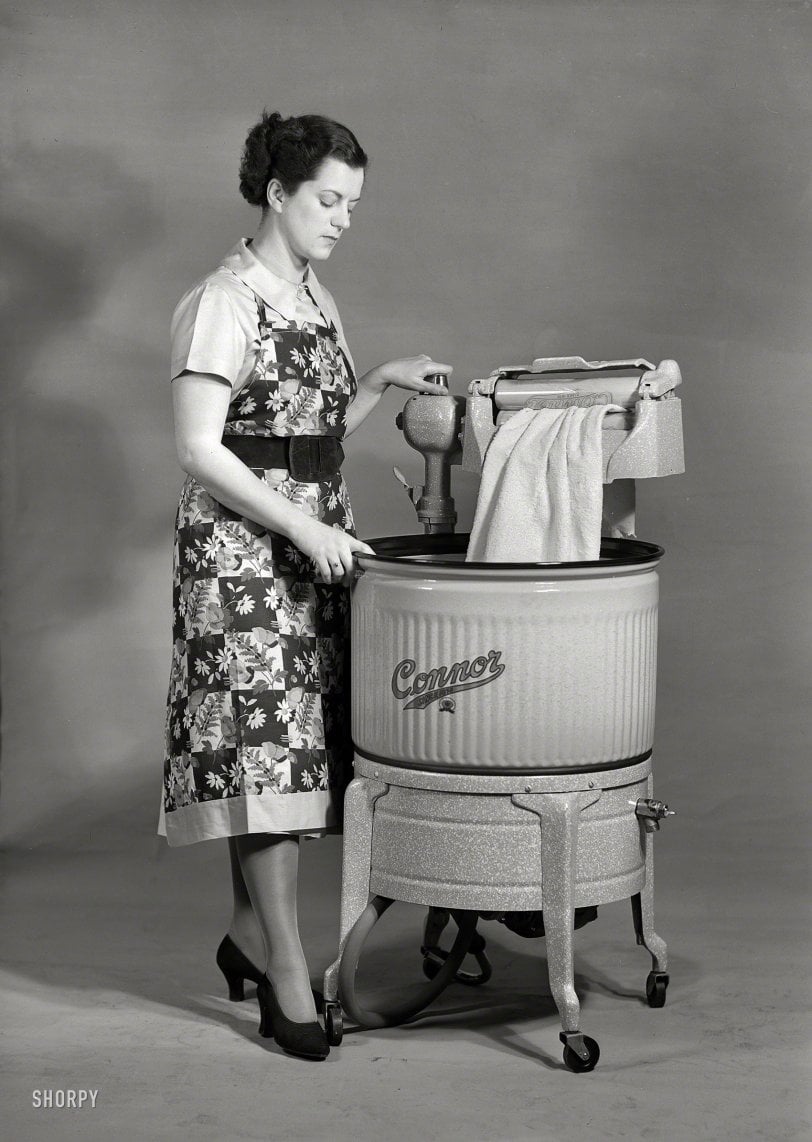
This decade saw the advent of more compact streamlined machines designed for use in the UK kitchen. Instead of the tub on legs there is a small cabinet which uses a spinning pulsator to whirl the clothes through the water and a simple hand wringer attached to the top. At this time, we saw the introduction of the first soap powder in boxes.
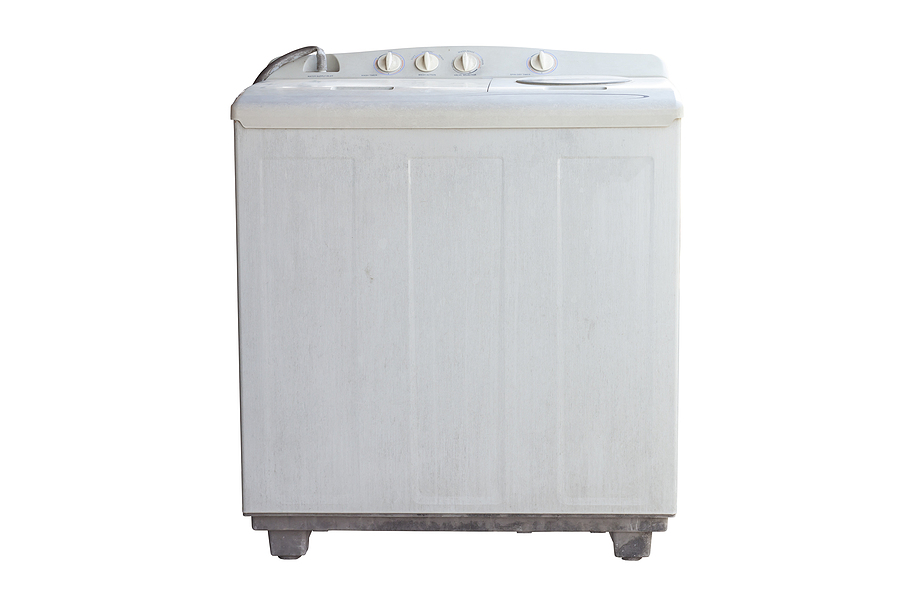
1950’s
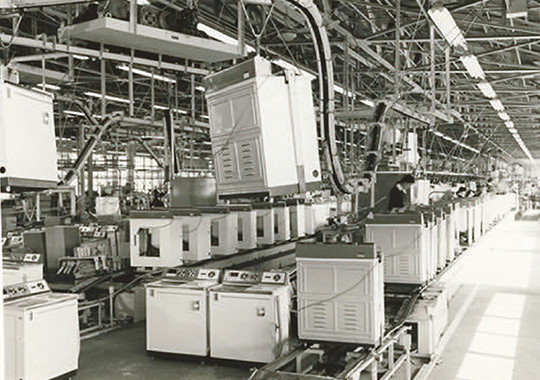
There might have been a single tub with a larger capacity than the 40’s machine and now combined with a spin dryer which removed the need for a wringer, which had always been a little dangerous for women with long hair!
1960’s
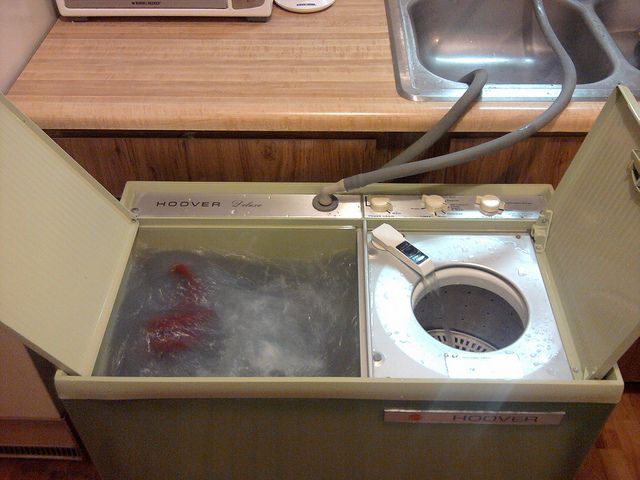 The swinging sixties saw the introduction of the combined washing machine and spin dryer with 2 units within the one appliance. Soap powders were now on the market advertising added ingredients with brighteners to give you whiter whites.
The swinging sixties saw the introduction of the combined washing machine and spin dryer with 2 units within the one appliance. Soap powders were now on the market advertising added ingredients with brighteners to give you whiter whites.
By the end of the sixties fully automatic washing machines that washed, rinsed and spun the clothes dry were introduced but they remained fairly costly to buy.
1970’s
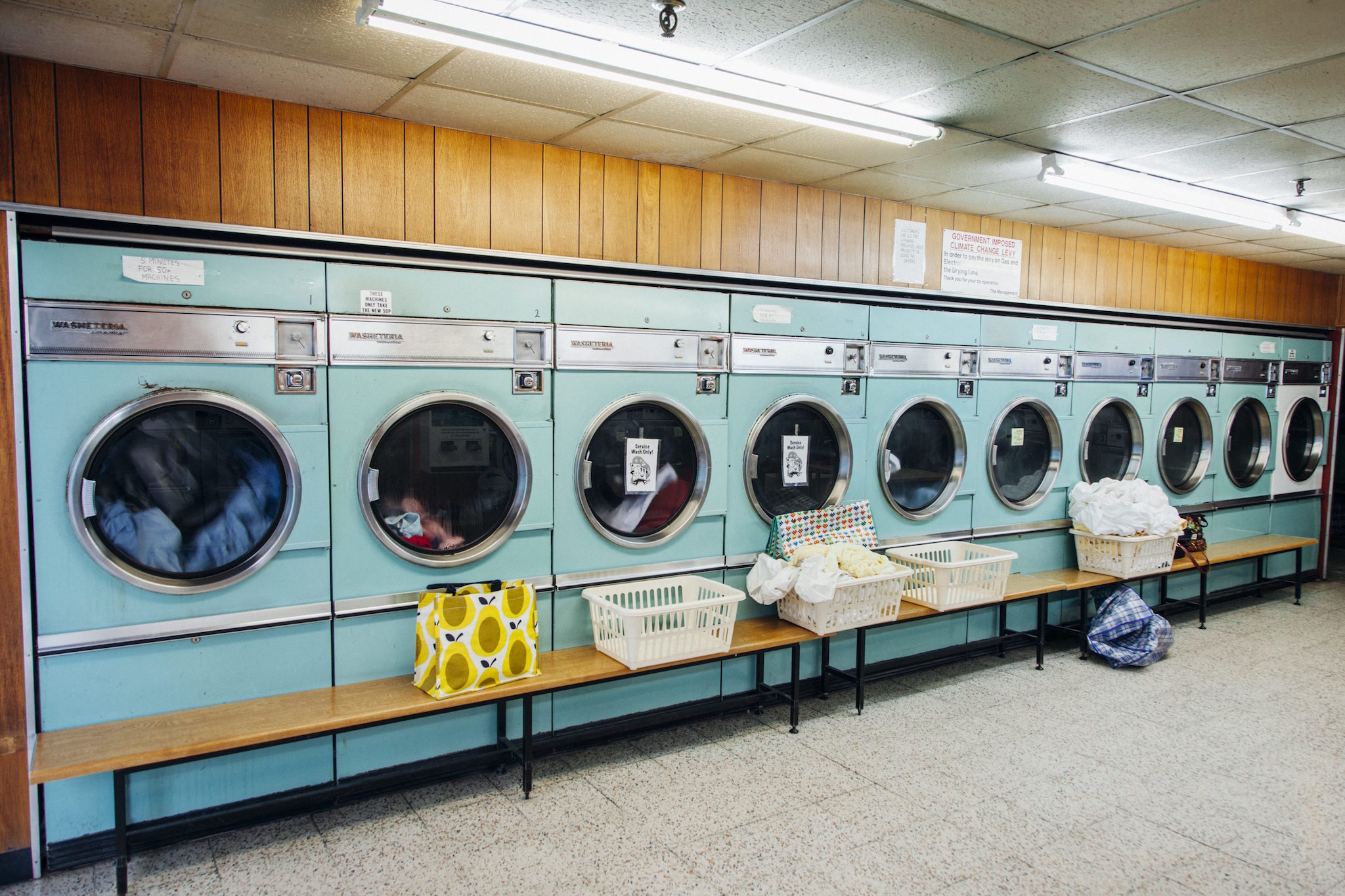 Initially due to the expense of automatic washing machines many UK households were using laundrettes, but they slowly started to come down in price and by 1970 65% of UK households had a washing machine.
Initially due to the expense of automatic washing machines many UK households were using laundrettes, but they slowly started to come down in price and by 1970 65% of UK households had a washing machine.
Fabric conditioner was introduced during this decade and so the machines were fitted with a compartment into which you added the soap powder and conditioner from where they were automatically dispensed into the machine with the conditioner being added to the final rinse
In 1976 Servis UK invented the first computerised washing machine.
1980’s
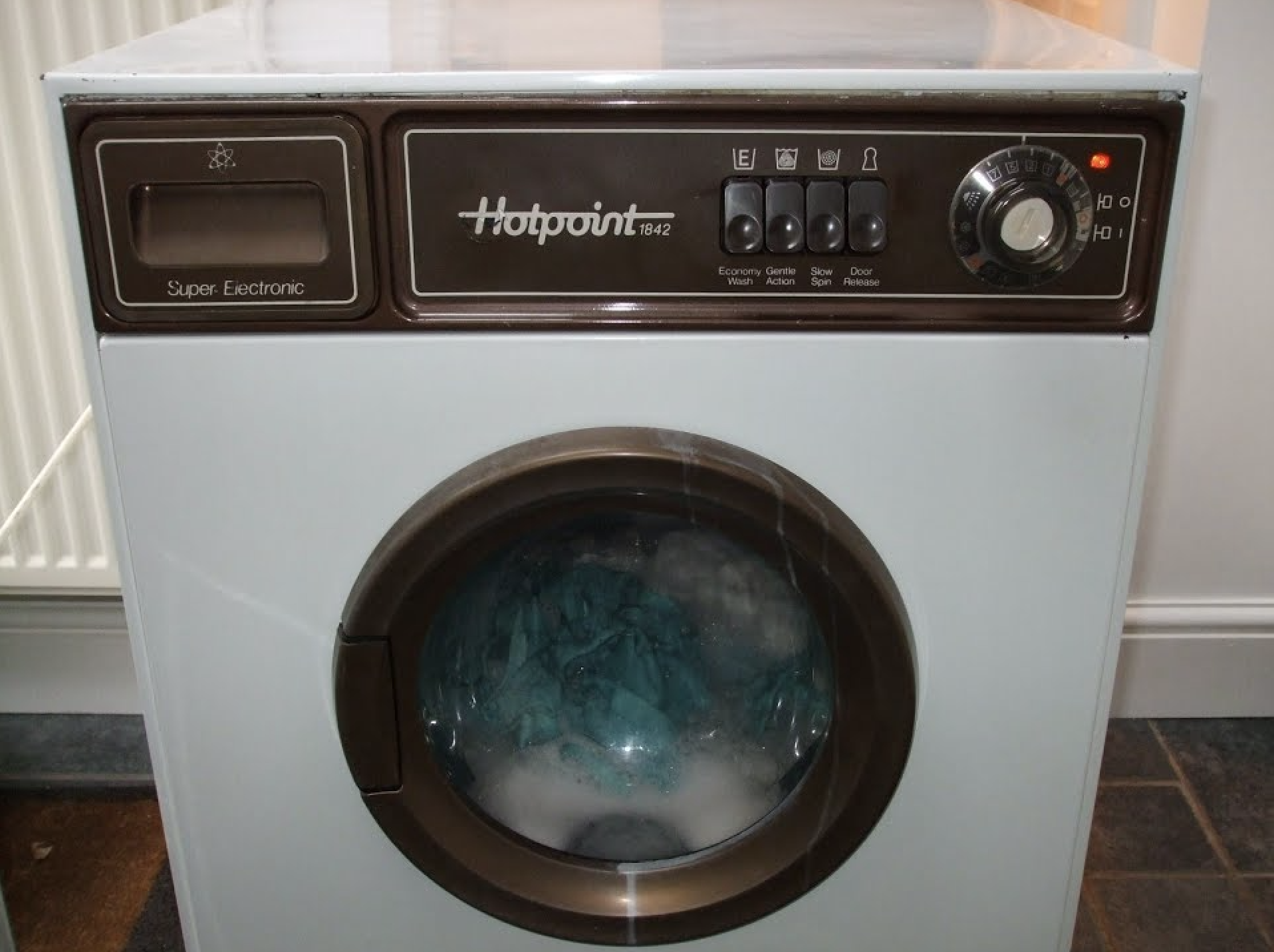 In conjunction with Proctor and Gamble, Servis introduced the quartz which enabled mixed loads of laundry to be washed at variable temperatures.
In conjunction with Proctor and Gamble, Servis introduced the quartz which enabled mixed loads of laundry to be washed at variable temperatures.
Liquid detergents were also introduced at this time.
Today
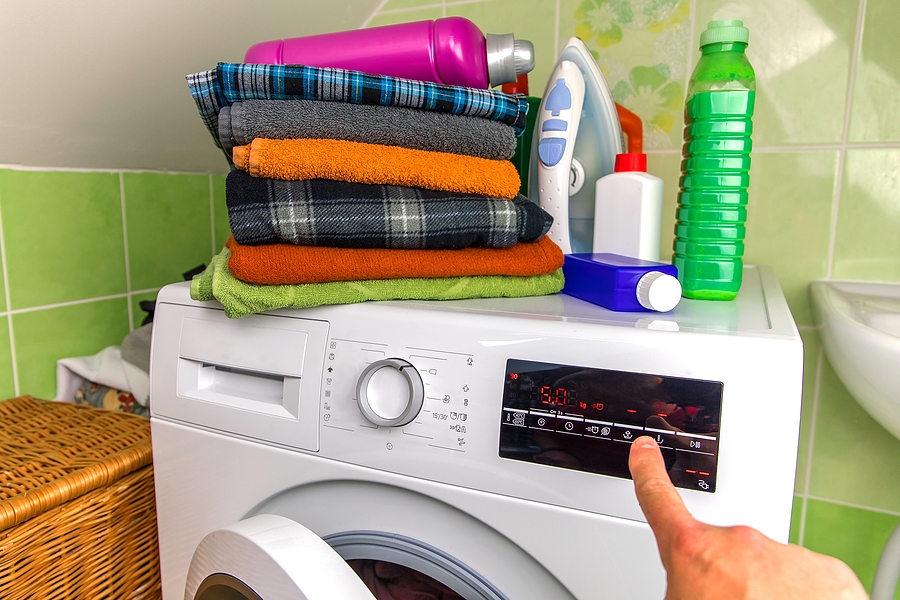
Modern machines today are more energy efficient, have a wide range of programmes and use a lot less water. They have a range of features which include hand wash programmes and drum clean cycles.
Washing machines are continuing to evolve with more consideration to their impact on the planet but consider the drastic difference this one invention has made to women in daily life. What had taken a day or more of heavy constant work every week could now be done with the relatively short action of lifting clothes into a machine and pressing a simple button! Women, who had been the primary labourers in this area could now use their time and talents to contribute to society in different and more fulfilling ways.
Melina - Assistant Editor
Latest posts by Melina - Assistant Editor (see all)
- Top tips for hay fever sufferers - April 14, 2024
- Paysan Breton Cream Cheese Breakfast Wraps - April 12, 2024
- 4 Homemade Sweet Treats for Easter - March 24, 2024
- Playground Memories - March 10, 2024
- The invasion of the duvet: the ’10-second bed’ - February 20, 2024








